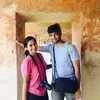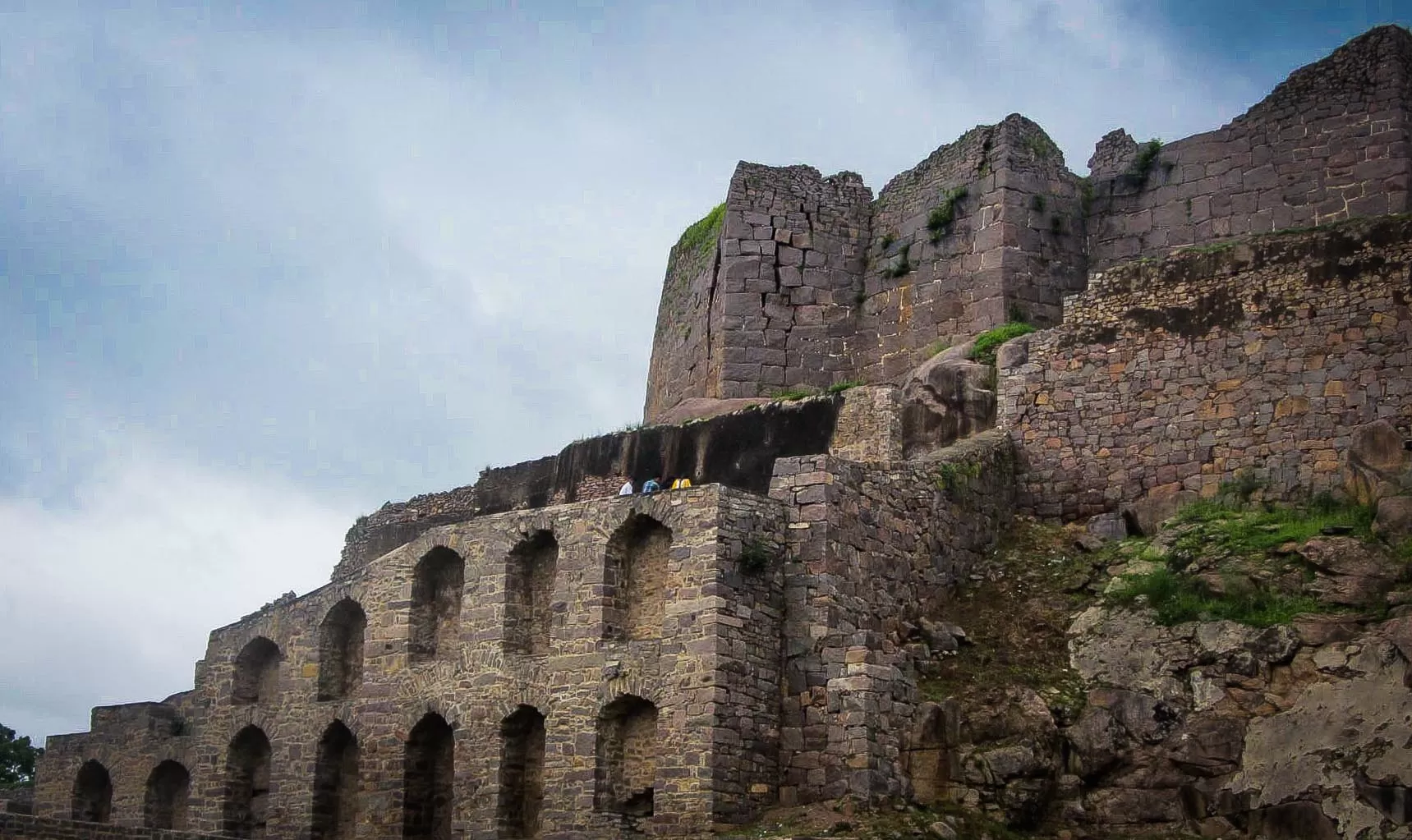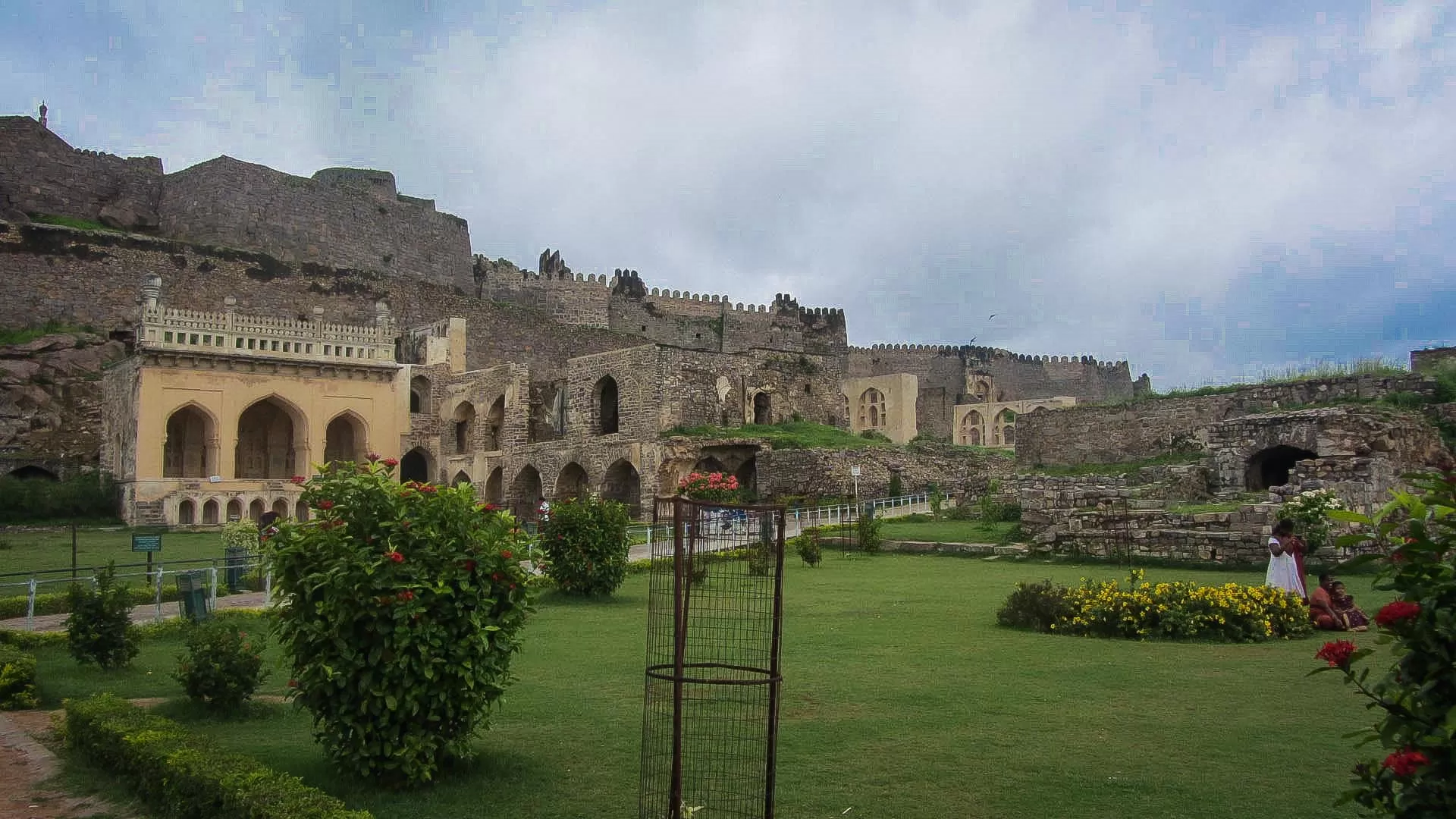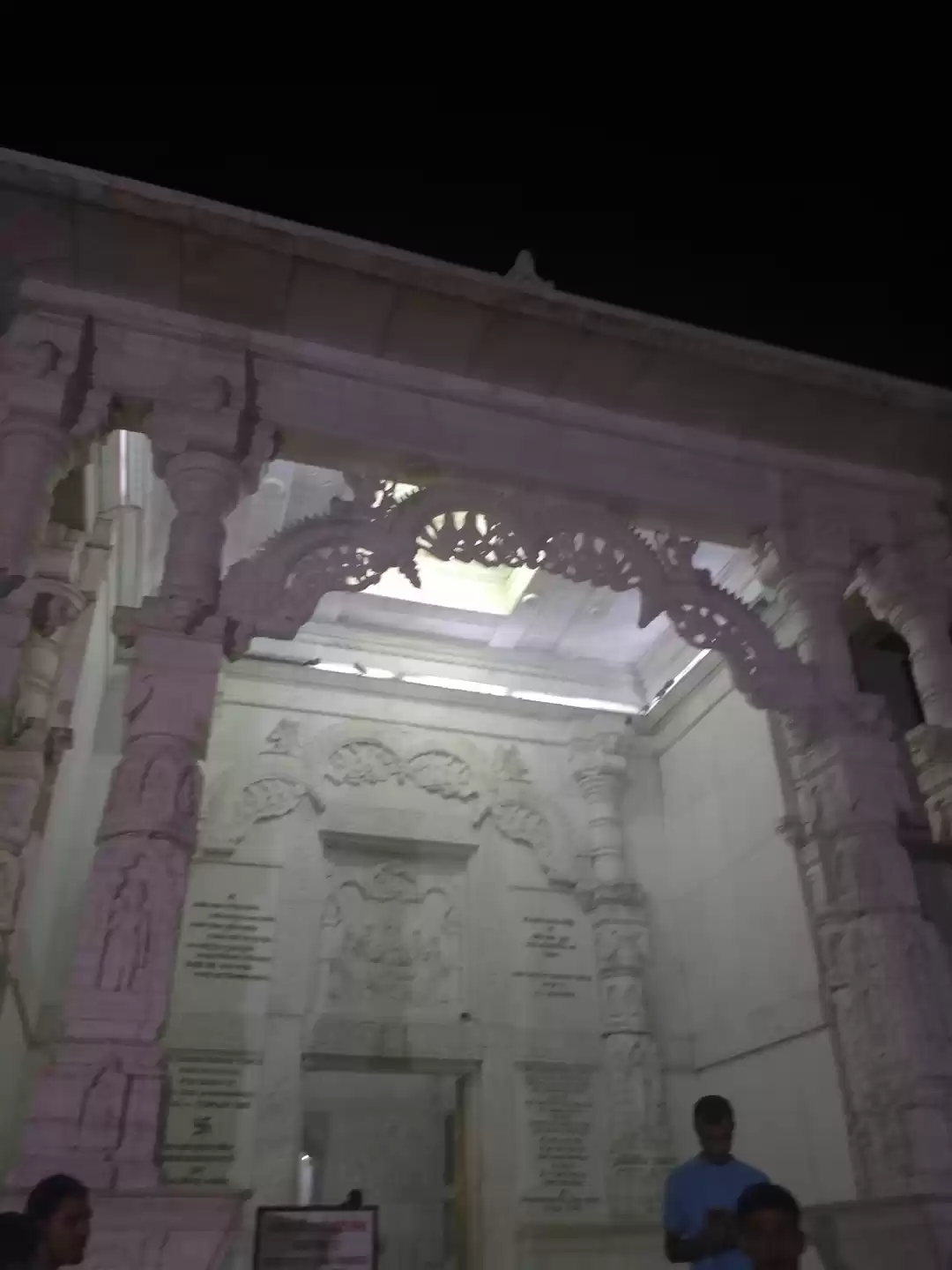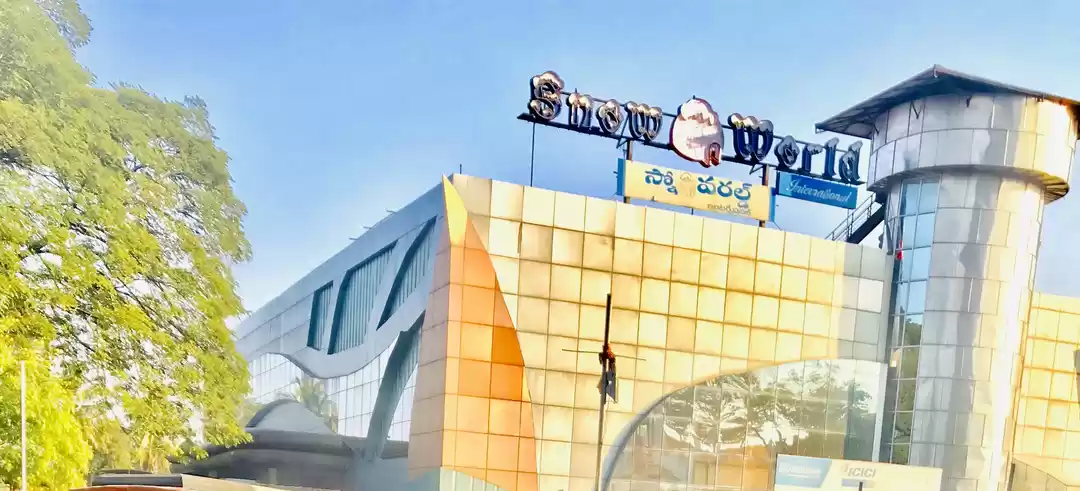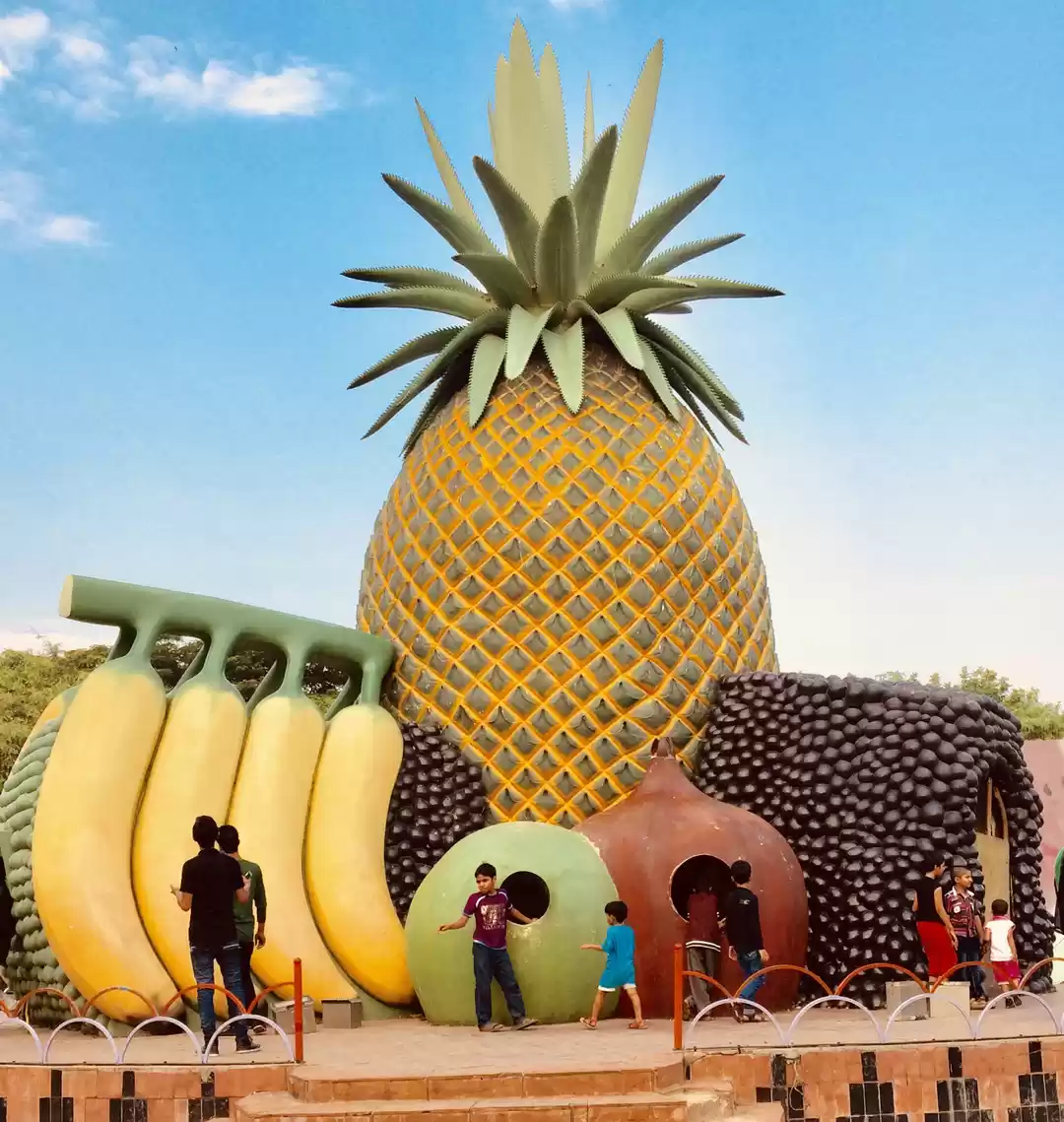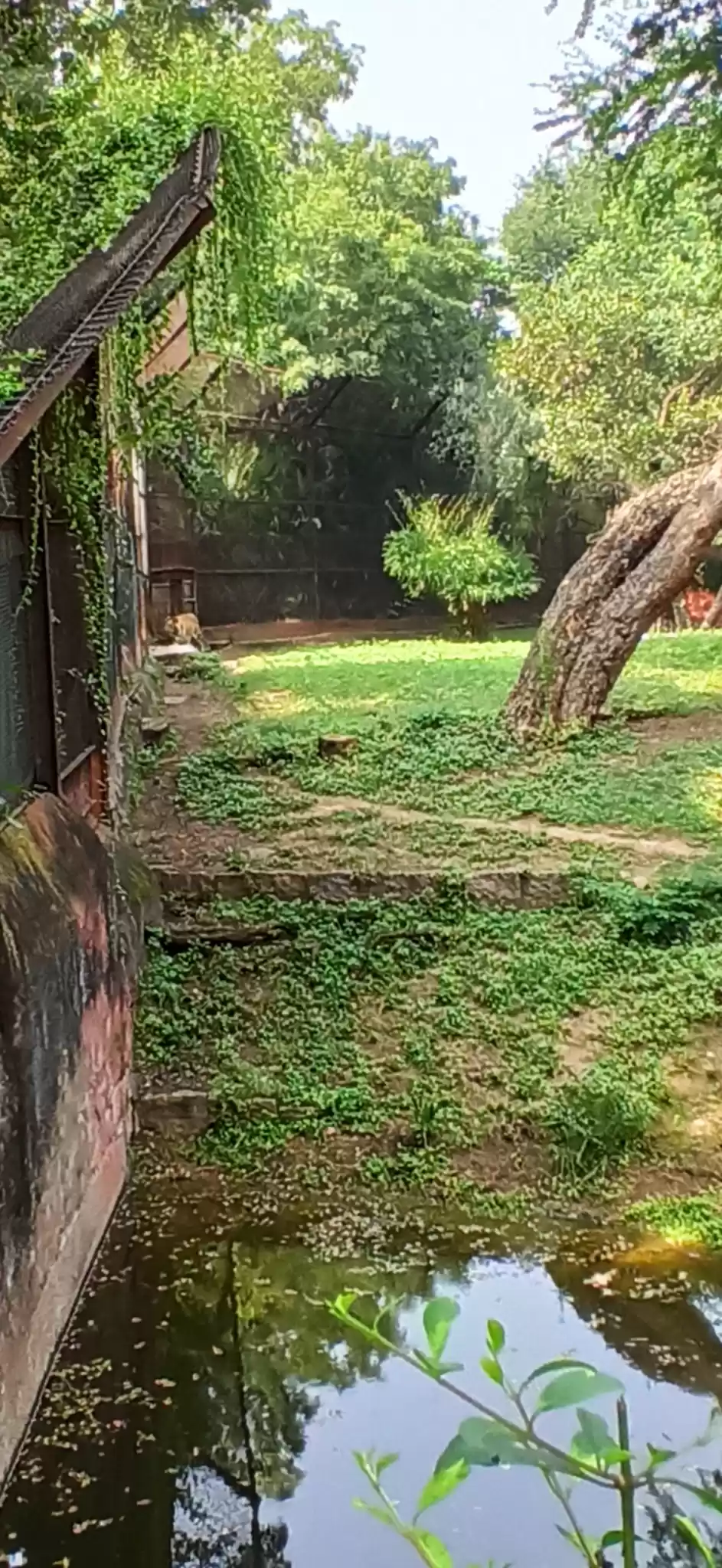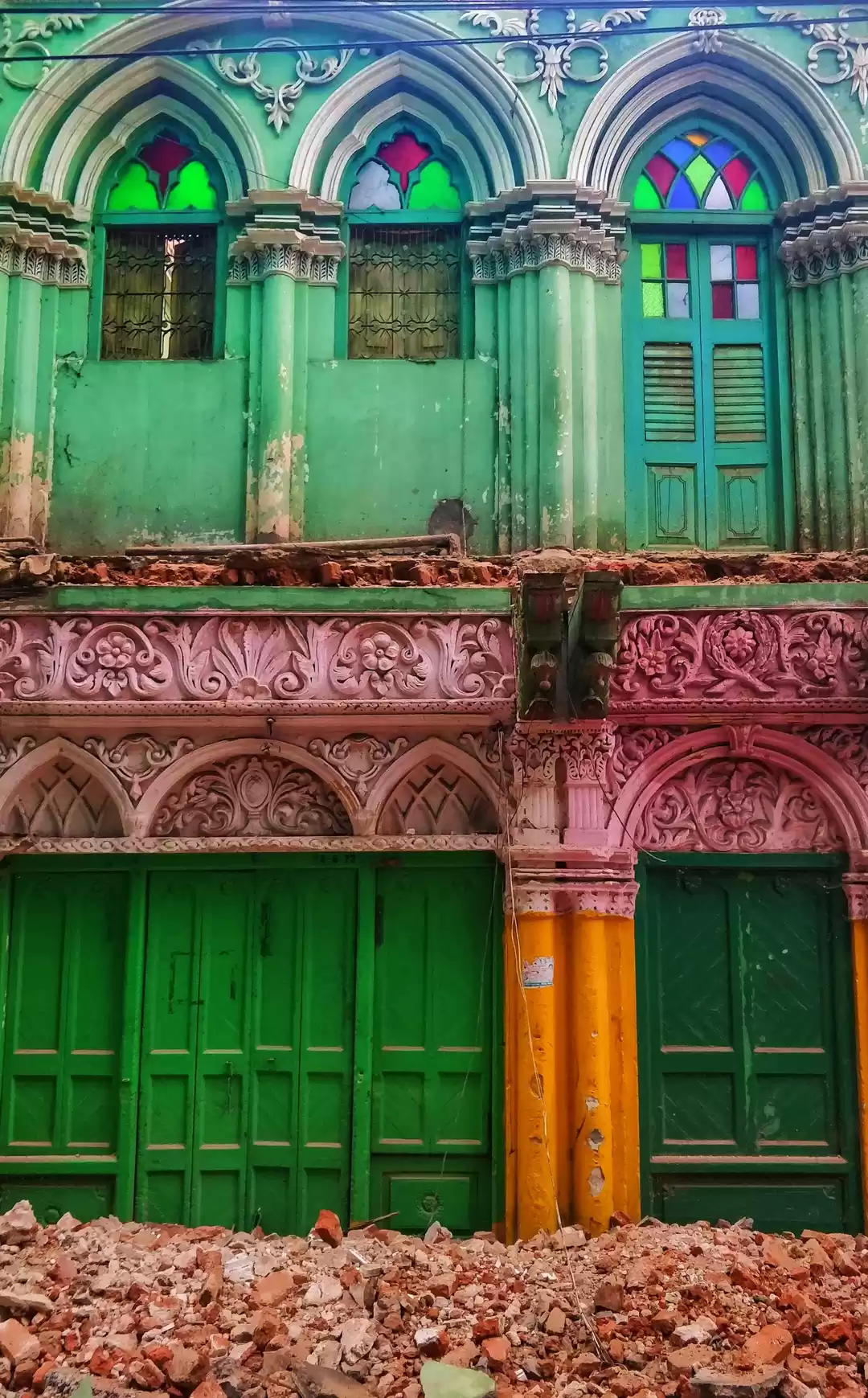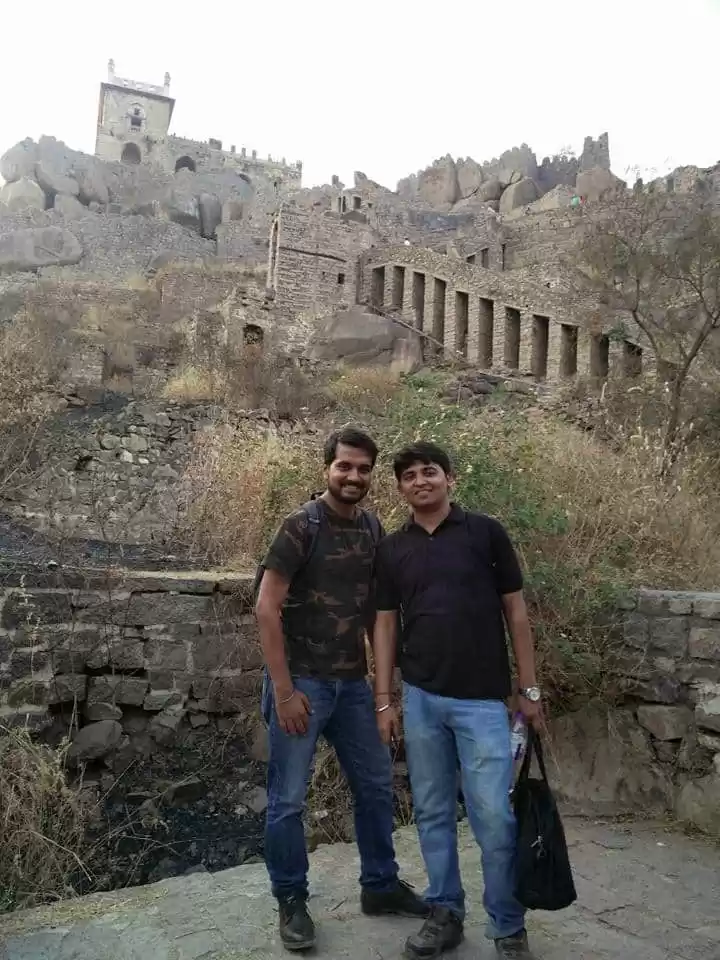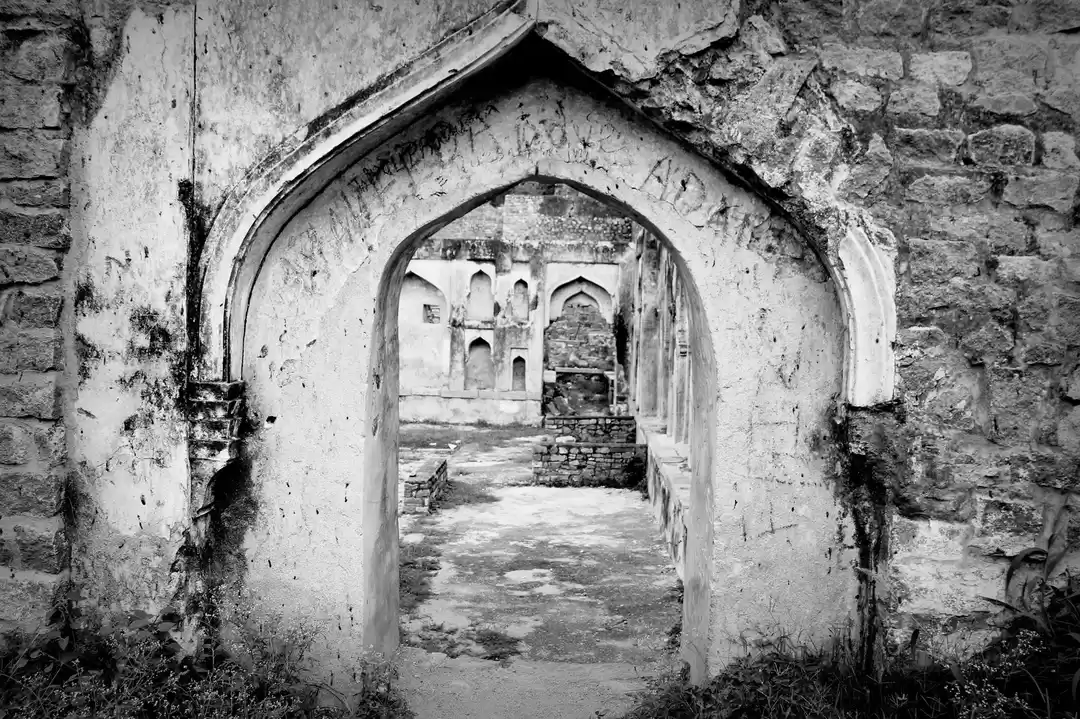Originally built as a mud fort by the Kakatiya dynasty in the 13th century, Golconda Fort in Hyderabad stands as a testament to the cultural heritage of the region, with its blend of Hindu and Islamic architectural styles. Golconda Fort is not just a fort, but a complex of palaces, mosques, temples, tombs, gardens, and museums.
It served as the capital of the Qutub Shahi kingdom from 1518 to 1687, until it was captured by the Mughal emperor Aurangzeb. Golconda Fort was also a center for the diamond trade, as it was located near the Golconda Diamond Mines, which were among the most productive in the world.
History Of Golconda Fort Hyderabad
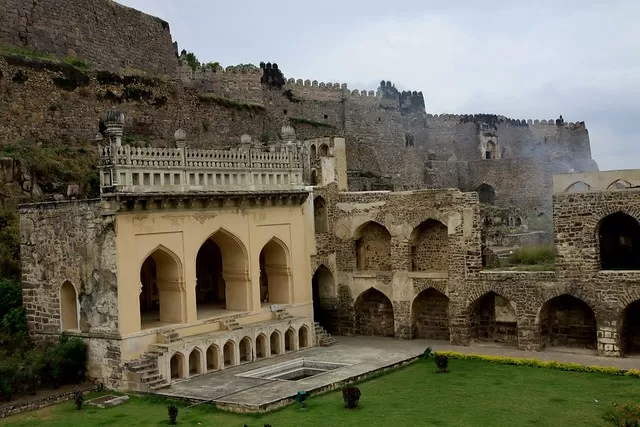
The history of Golconda Fort Hyderabad is a saga of glory and decline, spanning over six centuries.
Origin: Built as a mud fort by the Kakatiya dynasty in the 13th century, named "Golla Konda" meaning "shepherd’s hill".
Under Bahmani Sultanate: Came under Bahmani sultanate in 1364, expanded and strengthened with stone walls, gates, bastions, and towers.
Qutub Shahi Dynasty: Sultan Quli Qutub Shah established the Qutub Shahi dynasty in 1518, making Golconda his capital. The dynasty developed Golconda as a center of art, culture, literature, and architecture, as well as a hub for the diamond trade.
Mughal Conquest: Conquered by Aurangzeb in 1687 after an eight-month siege. Aurangzeb plundered Golconda's wealth and imprisoned its last ruler, leading to the decline of the fort.
Under Nizams: Asaf Jah I founded the Asaf Jahi or Nizam dynasty in 1724, shifting the capital to Hyderabad city. Golconda was neglected and forgotten until recognized as a heritage monument in 1951.
Explore the best of Hyderabad with Tripoto
Architecture Of Golconda Fort Hyderabad

Size and Structure: The fort covers an area of about 11 square kilometers and is surrounded by a 10-kilometer-long wall that is 17 feet thick.
Gates: The wall features eight gates, each with a distinctive name and design.
Acoustic Feature: The Fateh Darwaza also has a remarkable acoustic feature where a clap at the entrance can be heard at the highest point of the fort, about a kilometer away. This was used as a signal system to alert guards of intruders or attacks.
Zones: The fort is divided into four distinct zones
- Outer Area: Where common people lived and worked, featuring markets, warehouses, stables, and barracks.
- Middle Area: Where nobles and officials resided, with mosques, temples, gardens, and pavilions.
- Inner Area: Where the royal family lived, including palaces, halls, courtyards, and fountains.
- Upper Area: Where military and defense establishments were located, with watchtowers, cannons, armories, and secret tunnels.
Main Attractions Inside Golconda Fort
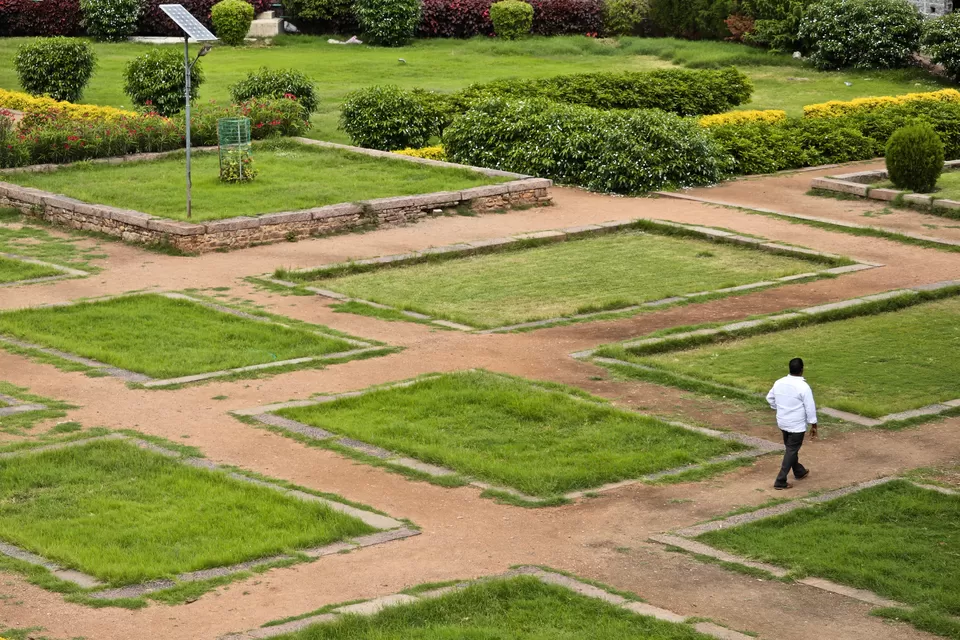
Bala Hissar Darwaza: This is the main entrance to the fort from the eastern side. It is a grand archway with intricate carvings and inscriptions.
Rani Mahal: This is the palace of the queens and princesses. It has elegant rooms with colourful tiles and paintings.
Durbar Hall: This is the hall where the king held his court and received his guests. It has a majestic throne made of marble and studded with precious stones.
Baradari: This is a pavilion with 12 arches and pillars. It was used as a summer retreat and a place for entertainment and relaxation.
Nagina Bagh: This is a garden with a pool shaped like a diamond. It was used for royal parties and celebrations.
Taramati Baradari: This is a 12-sided pavilion outside the fort, near the Qutub Shahi tombs. It was named after Taramati, a famous courtesan and singer who performed here for the king.
Jama Masjid: This is one of the oldest mosques in Hyderabad, built by Sultan Quli Qutub Shah in 1518. It has a large dome and four minarets.
Ramdas Bandikhana: This is a prison cell where Ramdas, a Hindu saint and devotee of Lord Rama, was imprisoned by Abul Hasan Tana Shah for misusing the royal funds to build a temple. Ramdas carved images of Rama, Sita, and Hanuman on the walls of his cell.
Kala Pahad: This is a hill on which Aurangzeb placed his cannons during the siege of Golconda. It was named Kala Pahad or Black Hill because of the smoke and dust that covered it during the bombardment.
Sound and light show: Witness a spectacular show that narrates the history and legends of Golconda Fort with special effects and music. The show is held every evening except Monday from 7 pm to 8 pm in English and from 8:15 pm to 9:15 pm in Telugu or Hindi (alternating days).
Read More: Complete shopping guide in Hyderabad
Places to Visit Near Golconda Fort

Qutb Shahi Tombs: Located near Golconda Fort, the Qutb Shahi Tombs are a group of magnificent mausoleums built in memory of the rulers of the Qutb Shahi dynasty. The tombs are known for their stunning architecture, with intricate carvings and domes.
Toli Masjid: Toli Masjid, also known as Damri Masjid, is a historic mosque located near Golconda Fort. Built during the Qutb Shahi period, the mosque is known for its unique architecture, with a blend of Persian and Indian styles.
Golconda Fort Viewpoint: For panoramic views of Golconda Fort and the surrounding area, visitors can head to the Golconda Fort Viewpoint.
Qutb Shahi Heritage Park: The Qutb Shahi Heritage Park is a sprawling complex that houses several tombs, mosques, and other structures related to the Qutb Shahi dynasty.
Hyderabad Golf Club: Located near Golconda Fort, the Hyderabad Golf Club is a popular destination for golf enthusiasts. The club features an 18-hole golf course set amidst lush greenery, offering a scenic and relaxing environment for golfers.
Timings & Ticket Prices For Golconda Fort
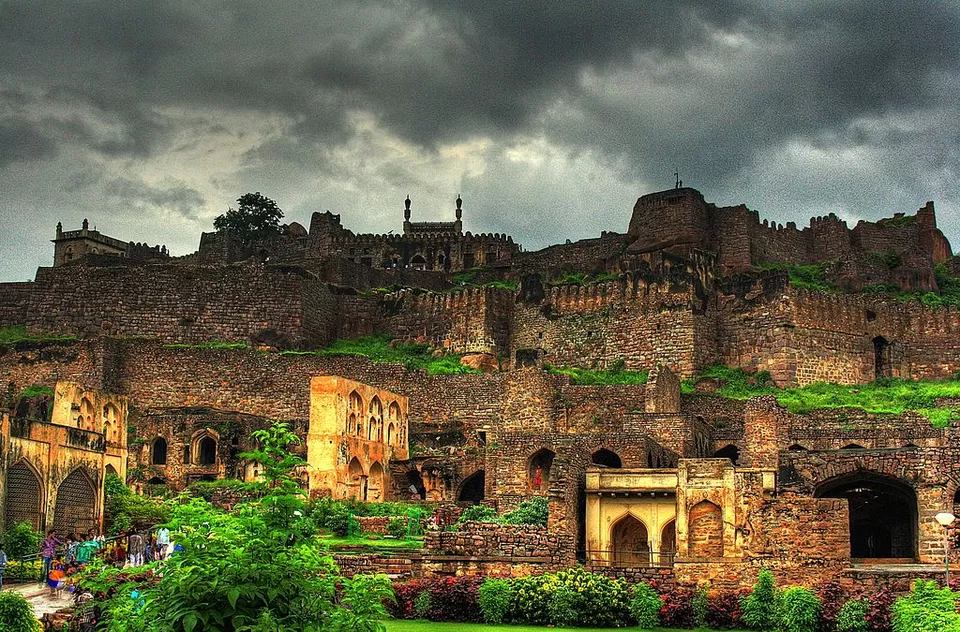
Time needed to explore Golconda Fort typically takes around 2 to 3 hours to explore Golconda Fort thoroughly, including visiting the various structures, viewpoints, and learning about its history.
Timings:
Golconda Fort is open from 9:00 AM to 5:30 PM every day.
Ticket Prices:
For Indians: Adults: Rs. 25
Children (below 12 years): Rs. 15
For Foreigners: Adults: Rs. 300
Children (below 12 years): Rs. 200
Ticket Prices for Fort and Light and Sound Show ( starting around 6:30):
For Indians - Light and Sound Show: Rs. 140
For Foreigners - Light and Sound Show: Rs. 200
The duration of the light and sound show is approximately 1 hour.
Must Read: Weekend Getaways near Hyderabad You Cannot Miss
How To Reach Golconda Fort

By Road: Located around 11 kilometers from Hyderabad city center.
Journey takes approximately 30 minutes, depending on traffic.
By Public Transport: Several buses run from different parts of Hyderabad to Golconda Fort.
Buses available from major bus stations like MGBS or Jubilee Bus Station.
By Metro: Nearest metro station is Shaikpet Metro Station, around 4 kilometers away.
Tips and recommendations for visitors

- There are not many options for food and water inside the fort. You may have to buy them from outside vendors at higher prices
- The fort has many stories and secrets that are not easily visible or understandable. Therefore, hire a guide or use an audio guide to learn more about the history and significance of various parts of the fort.
- There are many hawkers and touts who may try to sell you souvenirs or services at inflated prices or scam you in some way.





